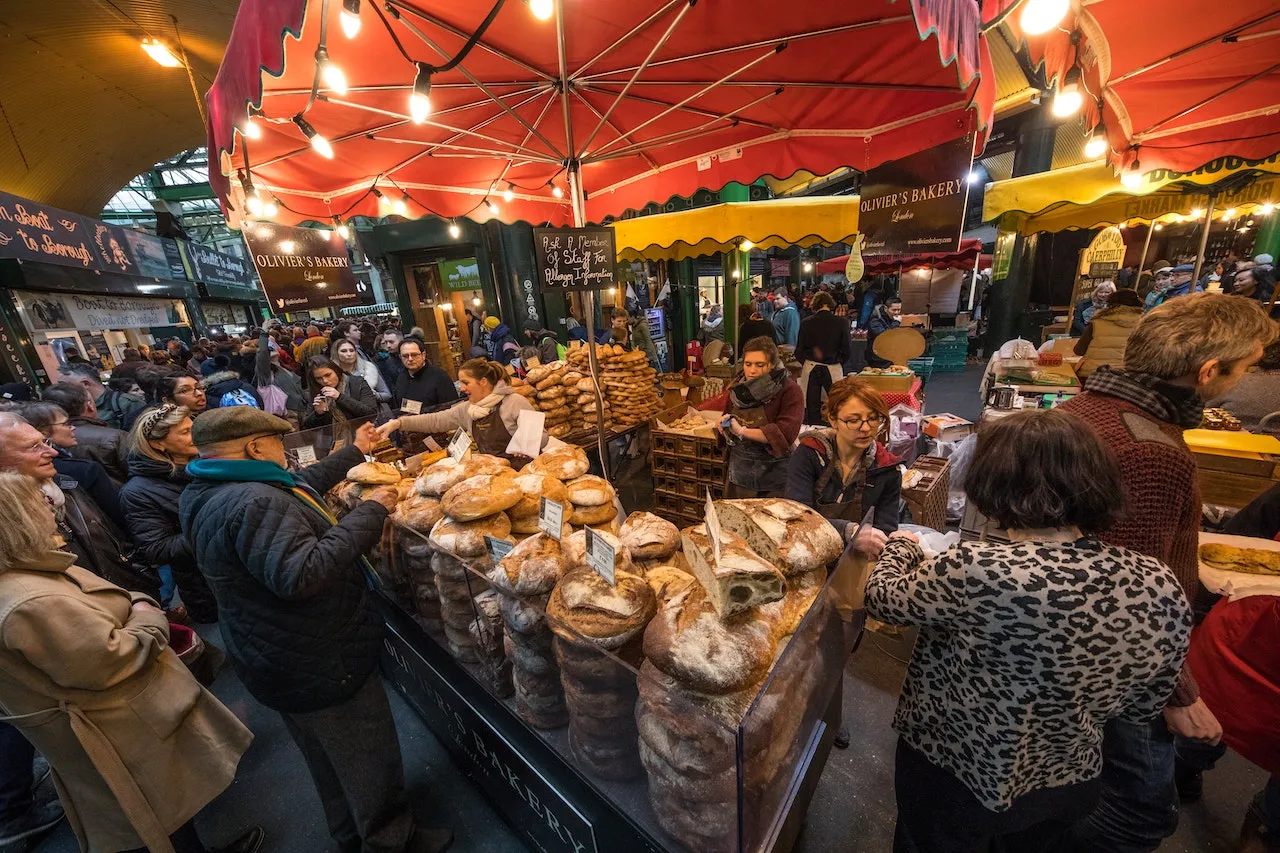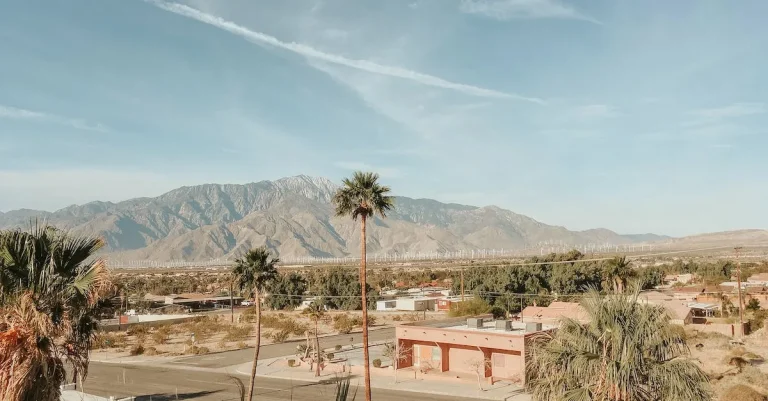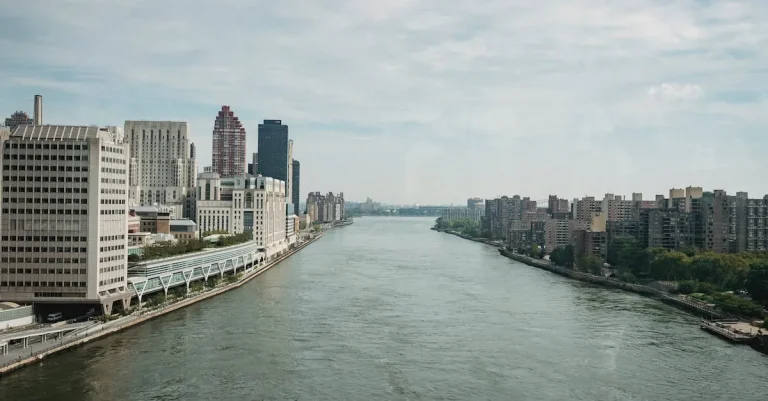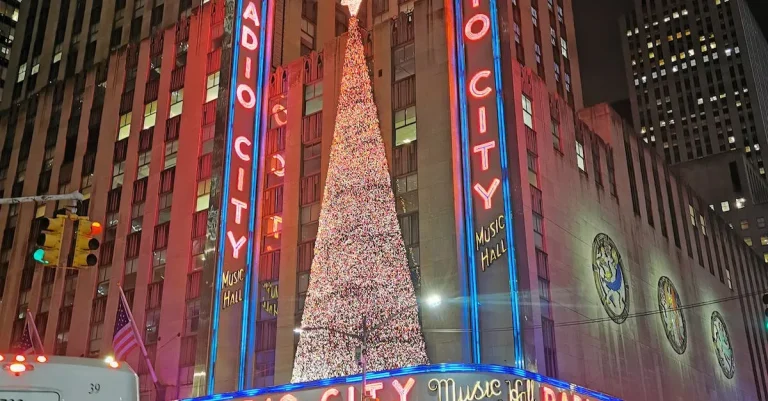Why Does New York Have Boroughs? A History Of Nyc’S Distinct Areas
With its towering skyscrapers, pulsing neighborhoods, and iconic landmarks, New York City stands apart from any other place in the world. But what truly makes the city one-of-a-kind is its division into distinct boroughs, each with its own personality and charm.
If you’re short on time, here’s the quick answer: New York has boroughs as a result of the 1898 consolidation of Manhattan, Brooklyn, Queens, The Bronx, and Staten Island into one united city.
In this comprehensive guide, we’ll dive into the unique history and evolution of New York City’s borough system. You’ll learn about how each area developed its own identity over time, why the borough construct was created in the late 1800s, and how the diverse boroughs contribute to the inimitable character of NYC today.
The Origins and History of NYC’s Boroughs
New York City is known for its distinct areas, known as boroughs, each with its own unique character and history. The boroughs of New York City, including Manhattan, Brooklyn, Queens, The Bronx, and Staten Island, have a rich and fascinating history that dates back to colonial times.
Colonial Settlements on Long Island and Manhattan
The story of New York City’s boroughs begins with the early colonial settlements on Long Island and Manhattan. In the early 17th century, the Dutch established a settlement called New Amsterdam on the southern tip of Manhattan.
This settlement grew and prospered, attracting people from various backgrounds and cultures.
As the city expanded, additional settlements emerged on Long Island, including Brooklyn and Queens. These settlements were initially separate entities with their own local governments and administrations. However, as the population grew, the need for a unified governing body became apparent.
Rise of Brooklyn and Outlying Areas in 1800s
In the 1800s, Brooklyn emerged as a bustling city in its own right. It experienced rapid industrialization and attracted immigrants from various parts of the world, contributing to its diverse population.
Brooklyn’s growth and development led to calls for consolidation with Manhattan and the outlying areas.
During this time, the Bronx, which was initially part of Westchester County, also experienced significant growth. The construction of the Bronx River Parkway and the extension of the New York City subway system played a crucial role in connecting the Bronx to the rest of the city.
Consolidation into a Five Borough City in 1898
The consolidation of New York City into a five-borough city took place on January 1, 1898. This historic event brought together Manhattan, Brooklyn, Queens, The Bronx, and Staten Island under a single municipal government.
The consolidation was driven by the need for better infrastructure, improved services, and more efficient governance. It allowed for the development of a unified transportation system, the creation of parks and public spaces, and the implementation of citywide policies and regulations.
Today, each borough has its own unique identity and contributes to the vibrant tapestry of New York City. Manhattan is known for its iconic skyline and cultural landmarks, Brooklyn for its hipster neighborhoods and artistic scene, Queens for its diverse communities and international cuisine, The Bronx for its rich history and vibrant neighborhoods, and Staten Island for its suburban feel and natural beauty.
To explore more about the history of New York City’s boroughs, you can visit the official website of the City of New York or check out books and articles written by historians and experts in the field.
What Makes Each Borough Unique
Distinct Cultures and Neighborhoods
New York City’s boroughs each have their own distinct cultures and neighborhoods, making them unique and diverse. In Brooklyn, for example, you’ll find a vibrant mix of artistic communities, trendy neighborhoods like Williamsburg, and iconic landmarks such as the Brooklyn Bridge.
The Bronx, on the other hand, is known for its rich history in hip-hop culture and its strong sense of community. Queens boasts a multicultural melting pot with neighborhoods like Flushing, where you can find authentic Asian cuisine and cultural festivals.
Staten Island offers a more suburban feel with its picturesque waterfront views and close-knit communities.
Iconic Sites and Architecture
Each borough in New York City is home to its own iconic sites and architectural wonders. Manhattan, with its towering skyscrapers like the Empire State Building and the One World Trade Center, is synonymous with the city’s skyline.
The borough is also home to world-renowned cultural institutions, including the Metropolitan Museum of Art and Broadway theaters. In contrast, the Bronx is famous for Yankee Stadium, the home of the New York Yankees, while Queens boasts the stunning Unisphere in Flushing Meadows-Corona Park, a symbol of the 1964 World’s Fair.
Brooklyn showcases the iconic Coney Island amusement park and the historic brownstone buildings that line its streets.
Differences in Industry and Economy
The boroughs of New York City also differ in terms of their industries and economies. Manhattan, often referred to as the financial capital of the world, is home to Wall Street and numerous multinational corporations. It is a hub for finance, business, and professional services.
Brooklyn, on the other hand, has experienced a resurgence in recent years, becoming a hub for technology and creative industries. The Bronx has a strong focus on healthcare and education, with institutions like Montefiore Medical Center and Fordham University contributing to its economy.
Queens is home to a major international airport, John F. Kennedy International Airport, and is known for its manufacturing and transportation industries. Staten Island has a more suburban economy, with a focus on healthcare, retail, and tourism.
The Benefits of the Borough System
The borough system in New York City has numerous benefits that contribute to the city’s unique character and functionality. From localized community identity and politics to tailored services and resources, the borough system has proven to be a successful framework for governance.
Additionally, healthy civic competition and pride are fostered among the boroughs, creating a sense of unity and diversity within the city.
Localized Community Identity and Politics
One of the key benefits of the borough system is the development of localized community identity and politics. Each borough in New York City has its own distinct culture, history, and character. This allows residents to feel a sense of belonging and pride in their specific borough, fostering a strong community spirit.
Moreover, the borough system enables local representation through borough presidents and community boards, ensuring that the unique needs and concerns of each borough are effectively addressed.
Tailored Services and Resources
The borough system also facilitates the provision of tailored services and resources to meet the specific needs of each borough. By having separate administrative structures for each borough, the city government can allocate resources and implement policies that are responsive to the distinct characteristics and challenges of each area.
This ensures that essential services such as education, healthcare, transportation, and public safety are efficiently managed and delivered to the residents of each borough.
Healthy Civic Competition and Pride
The borough system fosters healthy civic competition and pride among the different areas of New York City. Each borough has its own unique landmarks, attractions, and cultural institutions, which contribute to the overall vibrancy and diversity of the city.
This healthy competition encourages boroughs to showcase their strengths and highlights, leading to the development of innovative initiatives and projects that benefit the entire city. Additionally, residents take pride in their borough’s achievements, further enhancing the sense of belonging and community.
How the Boroughs Interact Today
The boroughs of New York City may be distinct areas, but they are interconnected in several ways. Today, the boroughs interact through commuting, shared municipal government, and overlapping industries and cultures.
Commuting Between Boroughs
Commuting between boroughs is a common occurrence for many New Yorkers. With a well-developed public transportation system, it is relatively easy to travel from one borough to another. The subway system, buses, and ferries connect the boroughs, allowing residents to easily commute to work or explore different parts of the city.
For example, a resident of Brooklyn can easily travel to Manhattan for work or entertainment, or a resident of Queens can visit the Bronx for a family gathering. This transportation infrastructure contributes to the cohesive nature of New York City as a whole.
Shared Municipal Government
New York City operates under a shared municipal government, which means that all five boroughs are part of the same administrative structure. The Mayor of New York City, elected by the entire city, governs all boroughs.
Each borough also has its own Borough President, who acts as a representative and advocate for the specific needs and interests of their borough. This shared government structure ensures that the boroughs have a voice in citywide decision-making processes and fosters a sense of unity among the diverse neighborhoods of New York City.
Overlapping Industries and Cultures
The boroughs of New York City are known for their unique industries and cultures, but there is also a significant amount of overlap. For example, Manhattan is a major financial hub, but Brooklyn has also become a hotspot for startups and creative industries.
Queens is known for its diverse immigrant communities and cultural institutions, while the Bronx has a rich history in hip-hop and street art. These overlapping industries and cultures create a vibrant and dynamic cityscape, where different boroughs influence and inspire each other.
The diversity and collaboration among the boroughs contribute to the overall greatness of New York City.
The Boroughs’ Role in NYC’s Global Identity
New York City is renowned for its diverse and vibrant neighborhoods, each with its own unique atmosphere and character. This is largely due to the city’s borough system, which divides the city into distinct areas.
The boroughs of New York City play a crucial role in shaping the city’s global identity.
Unique Atmosphere of Each Contributes to Whole
One of the key reasons why the boroughs are essential to New York City’s global identity is the unique atmosphere and personality that each one brings to the table. From the hustle and bustle of Manhattan to the artistic and bohemian vibes of Brooklyn, each borough has its own distinct flavor.
This diversity is a reflection of the city’s multiculturalism and has become a defining feature of New York City’s global reputation.
For example, Manhattan is known for its iconic landmarks such as Times Square, Central Park, and Wall Street, making it the epitome of the bustling metropolis. On the other hand, Brooklyn is celebrated for its artistic community, with neighborhoods like Williamsburg and DUMBO attracting creatives from all over the world.
The unique atmosphere of each borough contributes to the overall tapestry of New York City, making it an exciting and vibrant destination.
Boroughs are Synonymous with NYC Around the World
When people think of New York City, they often associate it with its boroughs. The boroughs have become synonymous with the city’s identity and are recognized globally. This can be attributed to the influence of popular culture, with movies, TV shows, and songs often showcasing specific boroughs and their unique characteristics.
For instance, Brooklyn has gained international recognition through shows like “Girls” and “Brooklyn Nine-Nine,” which have showcased the borough’s distinct charm and appeal. Meanwhile, Manhattan has been immortalized in countless films and TV shows, solidifying its status as the heart of New York City.
The widespread recognition of the boroughs has contributed to New York City’s global identity, attracting visitors from all corners of the globe who are eager to explore the diverse neighborhoods that make up the city.
Tourists Explore City Through Distinct Borough Lenses
Not only do the boroughs shape New York City’s global identity, but they also provide tourists with a unique lens through which to explore the city. Visitors can choose to immerse themselves in the glitz and glamour of Manhattan, savor the culinary delights of Queens, or soak up the artistic vibes of Brooklyn.
This allows tourists to tailor their New York City experience to their interests and preferences, ensuring that no two visits to the city are the same. Whether it’s exploring the vibrant streets of Chinatown in Manhattan or strolling along the iconic Coney Island boardwalk in Brooklyn, each borough offers a distinct experience that contributes to the overall appeal of New York City as a global destination.
Conclusion
New York City’s one-of-a-kind borough system came about through centuries of organic growth, consolidation, and cultivation of community identity. While each borough maintains a distinct personality, together they form the diverse patchwork that makes NYC a global icon.
Understanding New York’s development into boroughs provides tremendous insight into the history, culture, and day-to-day life of the city that never sleeps. The boroughs are an integral part of what makes New York…New York.








